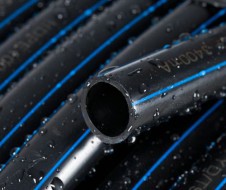

Nowadays, when using water pipes, they are generally divided into cold water pipes and hot water pipes. PE pipes are often used as cold water pipes, but careful selection is needed when choosing pipes to transport hot water. Therefore, can PE pipes be used as heating and hot water pipes? This has become something that most users want to know.
The PE pipe used, also known as Type 3 polypropylene pipe, is a new type of plastic pipe. It is a rigid straight pipe that cannot absorb the amount of deformation on its own. If it easily forms a tortuous deformation in the pipeline system, water leakage may occur. At the same time, the coefficient of expansion is relatively large, which means that there is a significant amount of deformation when subjected to external temperatures such as winter and summer, or changes in internal water temperature between cold and hot water. So it is not recommended to use heating pipes for PE pipes. And PE pipes have superior characteristics as water supply pipes, such as corrosion resistance, no scaling, long service life, and light pipe material, which are all required features for installing water pipes.
Sometimes it is difficult to completely match the actual work content of PE pipe construction with the sub items within the quota. I think as long as the corresponding cost of the bracket is reflected. There are actually three methods: 1. Install corresponding brackets according to the actual weight of the pipeline to make a certain number of ratings. 2. The corresponding installation sub items for welded steel pipes can also be regarded as pipeline installation. 3. Add a new sub item and make up for the actual expenses incurred.
PE pipes are not suitable for use as heating and hot water pipes, mainly because temperature changes can cause its internal system to form twists and turns, leading to water leakage and damage.
